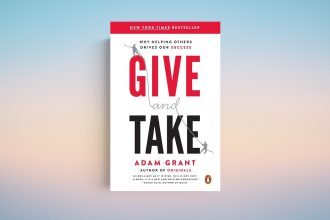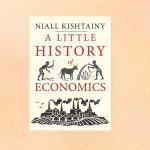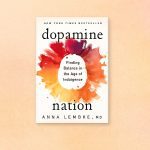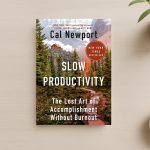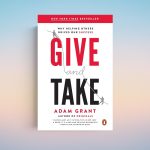Slow Productivity: The Lost Art of Accomplishment Without Burnout by Cal Newport redefines success in modern knowledge work. Newport presents a humane, impactful alternative to the relentless busyness that leads to exhaustion, grounded in three principles: do fewer things, work at a natural pace, and obsess over quality. Drawing on historical examples, real-world case studies, and practical strategies, he reveals how individuals and organizations can produce exceptional results while preserving well-being. Slow Productivity by Cal Newport empowers professionals to reclaim control over their pace, focus on work that matters, and create enduring value without sacrificing health, balance, or long-term career sustainability.
1. Introduction to Slow Productivity by Cal Newport
In Slow Productivity: The Lost Art of Accomplishment Without Burnout, Cal Newport challenges the prevalent culture of relentless busyness and constant performance metrics that dominate modern knowledge work. Newport builds upon his earlier themes from Deep Work and A World Without Email, but here he focuses explicitly on redefining productivity – not as the volume of tasks completed, but as the sustained creation of valuable, high-quality contributions over time without sacrificing mental and physical well-being.
Slow Productivity by Cal Newport advocates a philosophy Newport calls Slow Productivity, grounded in three core principles:
Do fewer things – minimize commitments to only the most essential and meaningful projects.
Work at a natural pace – avoid frantic schedules; embrace a rhythm that alternates between intense focus and restorative downtime.
Obsess over quality – measure accomplishment by impact and craftsmanship, not by speed or quantity.
Newport’s approach is as much a cultural critique as it is a practical guide. He blends historical examples, case studies from diverse professions, and actionable strategies to help individuals, teams, and organizations escape the trap of “pseudo-productivity” – the tendency to equate visible busyness with meaningful output.
2. Author Biography: Cal Newport
Cal Newport is an American author, computer science professor at Georgetown University, and one of the leading voices on productivity in the age of digital distraction.
– Academic Background: Newport holds a PhD from MIT in electrical engineering and computer science.
– Publications: He is widely known for Deep Work, Digital Minimalism, and So Good They Can’t Ignore You.
– Writing Focus: His work often intersects technology, work culture, and human cognition, aiming to help knowledge workers achieve sustainable high performance.
– Public Engagement: Newport writes the long-running “Study Hacks” blog and contributes to The New Yorker, exploring the challenges and solutions in modern work life.
By combining empirical research, philosophical reflection, and lived examples, Newport has emerged as a trusted figure for readers seeking to reclaim control over their working lives in a hyper-connected world.
+ Book Summary of Deep Work by Cal Newport
3. The Problem with Modern Productivity: Pseudo-Productivity
Newport coins the term pseudo-productivity to describe how knowledge work has drifted into a culture where visible activity – answering emails promptly, attending numerous meetings, multitasking across projects – substitutes for actual accomplishment. This tendency mirrors industrial-era thinking, where the measurement of productivity in terms of output-per-hour made sense for repetitive manufacturing but falters in the creative, cognitive work of today.
Key Characteristics of Pseudo-Productivity:
– Endless Task Accumulation: Success is judged by how much you do, not by how well you do it.
– Always-On Availability: Workers pride themselves on instant responsiveness, eroding deep focus.
– Performance Theater: Busyness becomes a tool to signal commitment and value to superiors and peers.
– Reactive Work Style: The workday is driven by incoming demands rather than strategic priorities.
This model creates a destructive feedback loop: the more visible demands one meets, the more demands arrive, fueling stress, burnout, and declining quality over time.
4. Historical and Cultural Roots of Productivity
Slow Productivity by Cal Newport traces current productivity culture back through several influences:
Industrial Management Methods: Borrowing output-oriented metrics from manufacturing.
Corporate Bureaucracy of the 20th Century: Hierarchies rewarded compliance and visible effort.
Digital Communication Explosion: Email, instant messaging, and collaborative tools created a constant flow of small tasks.
Social Media Influence: Online productivity culture valorizes extreme efficiency hacks and glorifies overwork.
By situating today’s problems in a broader historical arc, Newport demonstrates how the “fast productivity” mindset was not inevitable – it is a social construct we can dismantle.
5. The Philosophy of Slow Productivity
Slow Productivity by Cal Newport defines Slow Productivity as a deliberate, measured approach to achieving meaningful goals:
Principle 1: Do Fewer Things
– Identify your “vital few” projects where your effort yields the highest impact.
– Develop the discipline to say “no” to most opportunities.
– Avoid fragmenting attention across too many commitments.
– Accept that career progress often comes from depth in fewer areas.
Example: Newport references writers and scholars who publish fewer works but have enduring influence, such as John McPhee, whose decades-long career demonstrates how narrow focus yields lasting value.
Principle 2: Work at a Natural Pace
– Alternate between periods of intense effort and rest.
– Drop the pressure for uniform high-speed execution.
– Recognize the seasonal nature of human energy and creativity.
– Respect the incubation time ideas need before execution.
Example: Newport draws on historical figures like scientists, novelists, and artists who balanced bursts of creation with long stretches of preparation or reflection.
Principle 3: Obsess Over Quality
– Treat craft as paramount – refine and revise until results stand out.
– Judge success by contribution to the field, organization, or community.
– Use quality as your productivity metric, not volume.
Example: Software teams that ship fewer features but ensure reliability, usability, and market fit ultimately outperform high-velocity teams with sloppy delivery.
6. Case Studies and Examples
Throughout the book, Newport uses case studies from creative industries, academia, and corporate life to illustrate slow productivity in action:
- John McPhee’s Writing Process:
McPhee spends months or years researching before writing, allowing complexity and nuance to emerge organically.
- Scientific Breakthroughs:
Innovations like the discovery of DNA’s structure required extended collaboration, deep concentration, and a tolerance for dead ends.
- Corporate Projects:
Certain companies slow their product cycles to ensure higher standards and reduced error costs, correcting the tendency toward rushed releases.
- Personal Career Stories:
Professionals who deliberately reduce their load often advance faster, as they produce work that is more strategic and memorable.
7. Strategies for Implementing Slow Productivity
In addition to theory, Slow Productivity by Cal Newport offers actionable steps:
Prioritization Framework
– Define career goals in terms of impact, not position or salary alone.
– Assign projects a clear “value score” to decide whether to commit.
Scheduling Adjustments
– Create “unavailable” blocks for deep work, insulated from communication tools.
– Allow downtime for reflection and replenishment.
Saying No Gracefully
– Use scripts and clear criteria to decline tasks without damaging relationships.
– Redirect requests toward more suitable colleagues or timeframes.
Measuring Quality
– Develop personal or team-level quality benchmarks.
– Regularly review work impact instead of work quantity.
8. Organizational Implications
While the Slow Productivity by Cal Newport often addresses individuals, Newport also speaks to leaders:
– Cultural Shifts: Leaders must reward meaningful results, not just visible busyness.
– Policy Changes: Reduce mandatory meetings, limit after-hours communication.
– Long-Term Metrics: Evaluate employee performance over multi-year contributions, not quarterly output spikes.
– Training: Help staff develop deep work habits to support the principles of slow productivity.
9. Benefits of Slow Productivity
For Individuals:
– Reduced stress and burnout.
– Increased satisfaction and craftsmanship.
– Better career longevity and adaptability.
– Higher likelihood of producing iconic or high-impact work.
For Organizations:
– More innovative, stable output.
– Improved employee retention.
– Better reputation due to quality deliverables.
– Stronger alignment between resources and strategic priorities.
10. Challenges and Misconceptions
Newport anticipates pushback:
– “Doing less means laziness” – He counters that doing fewer things allows deeper, more valuable work.
– “Slow pace will hurt competitiveness” – Newport argues that rushed output ultimately undermines reputation and efficiency.
– “This won’t work in high-pressure industries” – He suggests adaptation rather than wholesale adoption, letting teams slow critical parts of the workflow without halting responsiveness where necessary.
11. Connections to Newport’s Previous Work
Slow Productivity by Cal Newport complements ideas explored in:
– Deep Work: Slow productivity gives the time and structure to perform deep work effectively.
– Digital Minimalism: Reducing digital distractions supports natural pacing and selective project focus.
– A World Without Email: Limiting communication overload enables higher craft standards.
12. Conclusion: Slow Productivity by Cal Newport
Slow Productivity by Cal Newport offers a blueprint for resisting the unsustainable rhythms of modern knowledge work. By centering productivity on fewer, higher-quality outputs executed at a humane pace, individuals can achieve career success without the physical and mental toll of constant busyness.
Newport urges readers to reframe productivity from an industrial-age measure of throughput to a creative-age measure of impact. His three principles – do fewer things, work at a natural pace, obsess over quality – equip both individuals and organizations to escape pseudo-productivity and build a culture where accomplishment does not require burnout.
If you found this summary helpful, please share it or leave a comment below.






